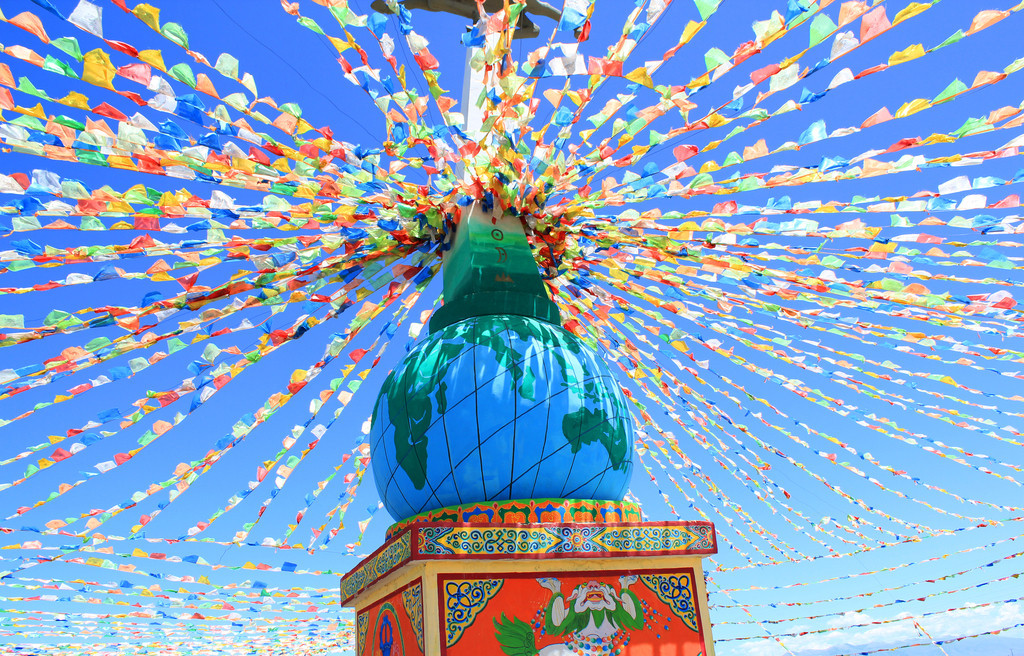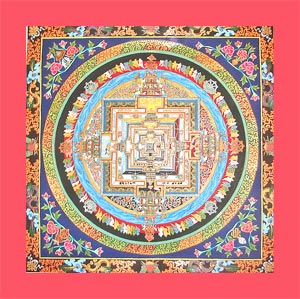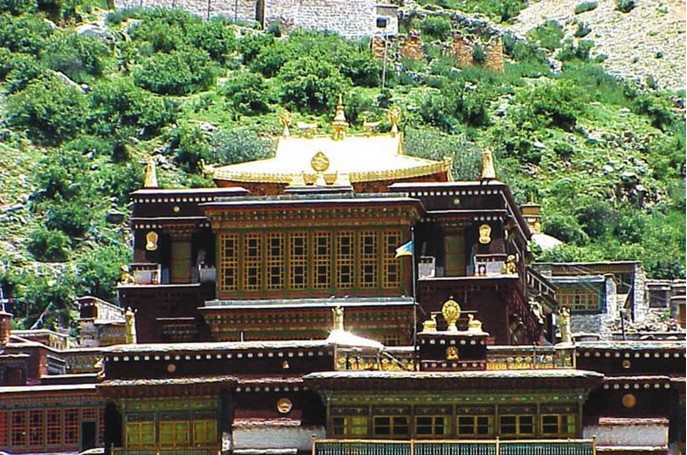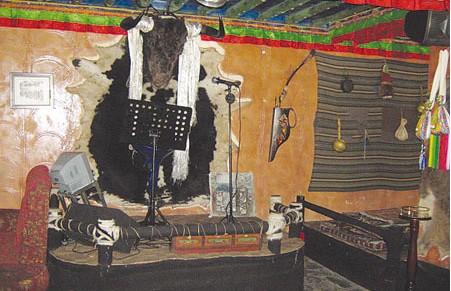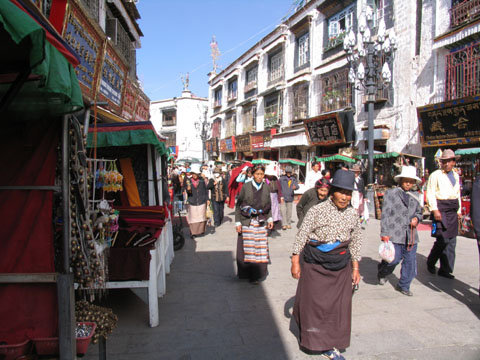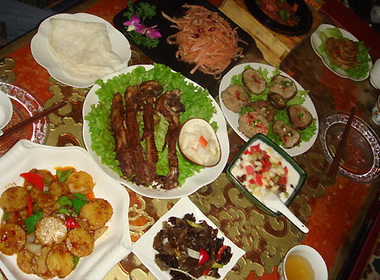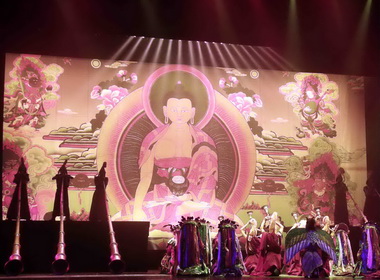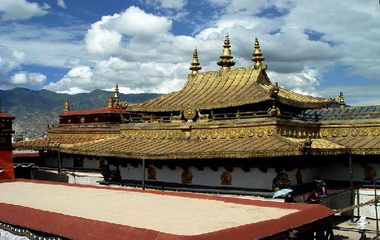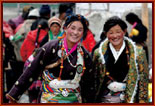Tibetan Architecture
Architecture in Tibet contains Chinese and Indian influences, and reflects a deeply Buddhist approach. The Buddhist Prayer wheel, along with two deers or dragons, can be seen on almost every Gompa in Tibet. The design of the Tibetan Chortens can vary, from roundish walls in Kham to squarish, four-sided walls in Ladakh.
The most unusual feature of Tibetan architecture is that many of the houses and monasteries are built on elevated, sunny sites facing the south, and are often made out a mixture of rocks, wood, cement and earth. There is very little fuel available for heat or lighting in Tibet, so flat roofs are built to conserve heat, and multiple windows are constructed to let sunlight in. Walls are usually sloped inwards at 10 degrees as a precaution against frequent earthquakes in the mountainous area.
Tashilhunpo shows the influence of Mongol styles of architecture contents.
World Heritage Site
Standing at 117 meters in height and 360 meters in width, the Potala Palace, designated as a World 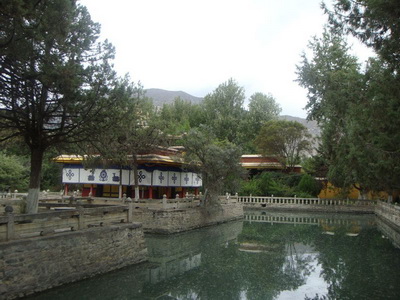 Heritage Site in 1994 and extended to include the Norbulingka area in 2001, is considered a most important example of Tibetan archetecture. Formerly the residence of the Dalai Lama, it contains over a thousand rooms within thirteen stories, and houses portraits of the past Dalai Lamas and statues of the Buddha. It is divided into the outer White Palace, which serves as the administrative quarters, and the inner Red Quarters, which houses the assembly hall of the Lamas, chapels, 10,000 shrines and a vast library of Buddhist scriptures.
Heritage Site in 1994 and extended to include the Norbulingka area in 2001, is considered a most important example of Tibetan archetecture. Formerly the residence of the Dalai Lama, it contains over a thousand rooms within thirteen stories, and houses portraits of the past Dalai Lamas and statues of the Buddha. It is divided into the outer White Palace, which serves as the administrative quarters, and the inner Red Quarters, which houses the assembly hall of the Lamas, chapels, 10,000 shrines and a vast library of Buddhist scriptures.
Traditional architecture
Yerpa monastery ruinsTraditional Kham architecture is seen in most dwellings in Kangding. Although the area has been previously heavily logged, wood is imported and used abundantly for housing. Horizontal timber beams support the roof which in turn are supported by wooden columns. The interior of houses are usually paneled with wood and the cabinetry is ornately decorated. In Ganzi, Kham, surrounded by forests, is known for its beautiful wooden houses built in a range of styles and lavishly 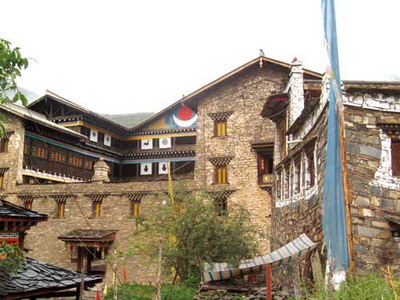 decorated with wooden ornamentation. Although various materials are used in the well-build houses, it is the skillful carpentry that is striking. Khan houses tend to be spacious and fit in well with their environment. Their floors and ceilings are wooden as they are throughout in Kangding. Carpentry is a skill that is passed down from father to son and there appear to be plenty of carpenters. However a threat to the traditional Tibetan carpentry is increasing use of concrete structures. Some consider the increased use of concrete as a deliberate infiltration of the Chinese influence into Tibet. In Gaba Township, where there are few Chinese, almost all the structures are traditional.
decorated with wooden ornamentation. Although various materials are used in the well-build houses, it is the skillful carpentry that is striking. Khan houses tend to be spacious and fit in well with their environment. Their floors and ceilings are wooden as they are throughout in Kangding. Carpentry is a skill that is passed down from father to son and there appear to be plenty of carpenters. However a threat to the traditional Tibetan carpentry is increasing use of concrete structures. Some consider the increased use of concrete as a deliberate infiltration of the Chinese influence into Tibet. In Gaba Township, where there are few Chinese, almost all the structures are traditional.
Religious architecture
Palcho Monastery
Buddhist scripture was catalogued in its entirety at Shalu Monastery China's Cultural Revolution resulted in the deterioration or loss of Buddhist monasteries, both by intentional destruction or through lack of protection and maintenance. Starting in the 1980s, Tibetans have begun to restore those monasteries that survived. This has become an international effort. Experts are teaching the Tibetans how to restore the building and save the remaining monasteries on the eastern plateau.
the deterioration or loss of Buddhist monasteries, both by intentional destruction or through lack of protection and maintenance. Starting in the 1980s, Tibetans have begun to restore those monasteries that survived. This has become an international effort. Experts are teaching the Tibetans how to restore the building and save the remaining monasteries on the eastern plateau.
Tashilhunpo Monastery shows the influence of Mongol architecture. Changzhug monastery is one of the oldest in Tibet, said to have been first built in the 7th century during the reign of King Songsten Gampo (605?-650 CE). Jokhang was also originally built under Songsten Gampo. Tsurphu Monastery was founded by the first Karmapa, Dusum Khyenpa (1110-1193) in 1159, after he visited the site and laid the foundation for an establishment of a seat there by making offerings to the local protectors, dharmapala and genius loci. In 1189 he revisited the site and founded his main seat there. The monastery grew to hold 1000 monks. Tsozong Gongba 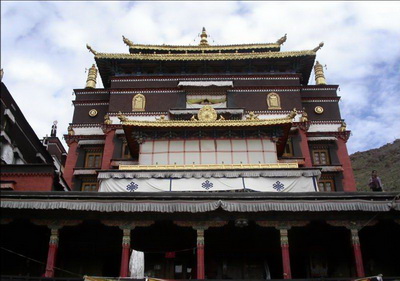 Monastery is a small shrine built around 14the century A.D. Palcho Monastery was founded in 1418 and known for its kumbum which has 108 chapels on its four floors. Chokorgyel Monastery, founded in 1509 by Gendun Gyatso, 2nd Dalai Lama once housed 500 monks but was completely destroyed during the Cultural Revolution.
Monastery is a small shrine built around 14the century A.D. Palcho Monastery was founded in 1418 and known for its kumbum which has 108 chapels on its four floors. Chokorgyel Monastery, founded in 1509 by Gendun Gyatso, 2nd Dalai Lama once housed 500 monks but was completely destroyed during the Cultural Revolution.


